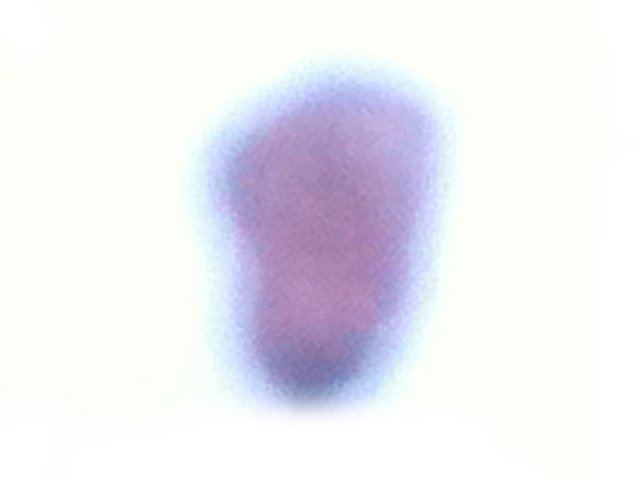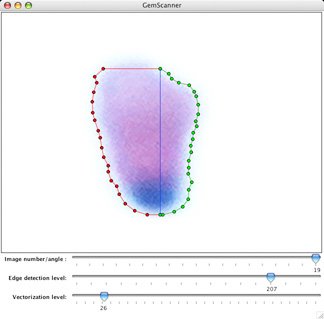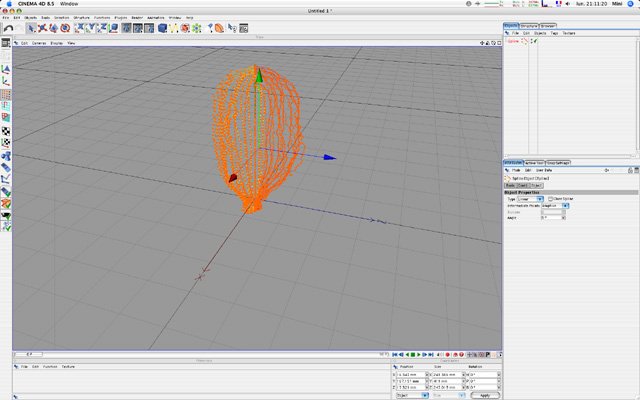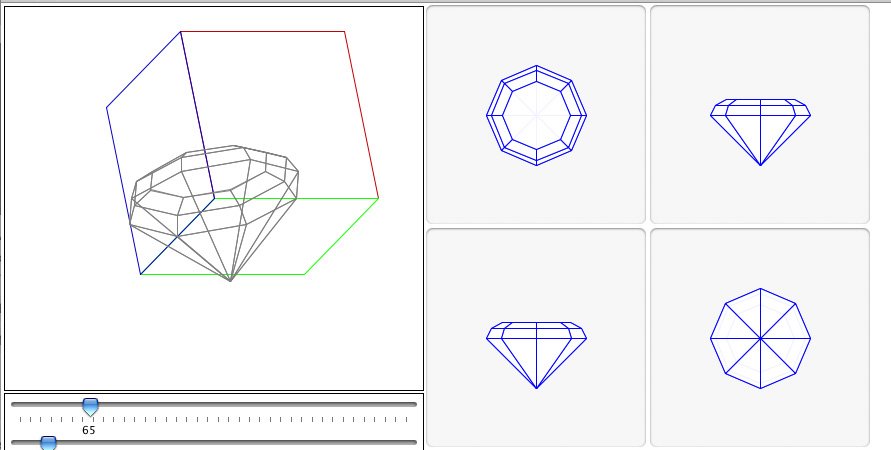Sodabowski
Thomas Rodriguez
G'day all,
So we're a few here to have an engineering background and working on faceting hardware and software. Nena started one here https://www.prospectingaustralia.com/forum/viewtopic.php?pid=366729
and since I don't want to pollute his posts too much (and we're taking different approaches to this business) here's a new topic about what a physics dude can come up with.
Let's start with a 3D model of the machine I'm working on (old post somehwere else in this website):
https://www.prospectingaustralia.com/forum/viewtopic.php?pid=123485#p123485
The plan is building a digitally-controlled faceting machine with a cost not too far away from the existing machines. The goal is under $ 2000 for the hardware, with no laps (it will take the standard 8" master laps and laps anyway).
As I progressed along this lengthy project, I eventually realized that I needed a way to enter the faceting designs into the computer and be able to translate them into cutting instructions for the machine. Soooo, I added a new branch to the project, which is a 3D faceting software la GemCAD. So here I am working on a polygonal modeler that simulates the controls of a faceting machine and outputs a set of cutting instructions and 3D views of the design.
Then, before you know, the perfectionism fairy chimes in and whacks me with her wand... and suddenly I find myself devising a 3D scanning device/method for gemstones. Rotating platform, stone stuck to a needle with whatever glue will do the trick, backlight and camera to shoot the profile of the stone at varying angles.
This is where I am so far : the 3D scanner soft is almost finished but far enough for a demo.
Here's the result of a hard test done with a tiny 0.7 carat pink saph (negative cryztallized faces!), that I stuck to a toothpick with a lil' dab o'wax, backlit heavily (glowing edges!) and shot every 10 degrees with my iPhone, with a very bad focus (hey, hard test!). I erased the toothpick afterwards in Photoshop, aligned and cropped the images, but once the dedicated scanning platform will be done there will be no intermediate processing.
Here's one of the 18 pictures:

A screenshot of the homebrew 3D scanner software, with one of the side views imported and the contours vectorized (two profiles actually, left and right):

And the resulting 3D mesh of said stone, imported in Cinema4D (since the 3D faceting modeler is not finished yet to display anything):

The number of points per contour is adjustable and I set it on a rather low points count here, which already gives a pretty decent outline of the stone.
Why do I care? well, having the 3D outline mesh of a stone to be cut, I can import it into the faceting diagram modeler and choose/optimize the design for the particular piece of rough that it will be cut into. Yield does matter, right?
Before you ask, yes, I have plans for the future for this software and the hardware that it will be meant to run. This is the early prototyping phase.
Cheers, and thanks for your interest.
So we're a few here to have an engineering background and working on faceting hardware and software. Nena started one here https://www.prospectingaustralia.com/forum/viewtopic.php?pid=366729
and since I don't want to pollute his posts too much (and we're taking different approaches to this business) here's a new topic about what a physics dude can come up with.
Let's start with a 3D model of the machine I'm working on (old post somehwere else in this website):
https://www.prospectingaustralia.com/forum/viewtopic.php?pid=123485#p123485
The plan is building a digitally-controlled faceting machine with a cost not too far away from the existing machines. The goal is under $ 2000 for the hardware, with no laps (it will take the standard 8" master laps and laps anyway).
As I progressed along this lengthy project, I eventually realized that I needed a way to enter the faceting designs into the computer and be able to translate them into cutting instructions for the machine. Soooo, I added a new branch to the project, which is a 3D faceting software la GemCAD. So here I am working on a polygonal modeler that simulates the controls of a faceting machine and outputs a set of cutting instructions and 3D views of the design.
Then, before you know, the perfectionism fairy chimes in and whacks me with her wand... and suddenly I find myself devising a 3D scanning device/method for gemstones. Rotating platform, stone stuck to a needle with whatever glue will do the trick, backlight and camera to shoot the profile of the stone at varying angles.
This is where I am so far : the 3D scanner soft is almost finished but far enough for a demo.
Here's the result of a hard test done with a tiny 0.7 carat pink saph (negative cryztallized faces!), that I stuck to a toothpick with a lil' dab o'wax, backlit heavily (glowing edges!) and shot every 10 degrees with my iPhone, with a very bad focus (hey, hard test!). I erased the toothpick afterwards in Photoshop, aligned and cropped the images, but once the dedicated scanning platform will be done there will be no intermediate processing.
Here's one of the 18 pictures:

A screenshot of the homebrew 3D scanner software, with one of the side views imported and the contours vectorized (two profiles actually, left and right):

And the resulting 3D mesh of said stone, imported in Cinema4D (since the 3D faceting modeler is not finished yet to display anything):

The number of points per contour is adjustable and I set it on a rather low points count here, which already gives a pretty decent outline of the stone.
Why do I care? well, having the 3D outline mesh of a stone to be cut, I can import it into the faceting diagram modeler and choose/optimize the design for the particular piece of rough that it will be cut into. Yield does matter, right?
Before you ask, yes, I have plans for the future for this software and the hardware that it will be meant to run. This is the early prototyping phase.
Cheers, and thanks for your interest.






